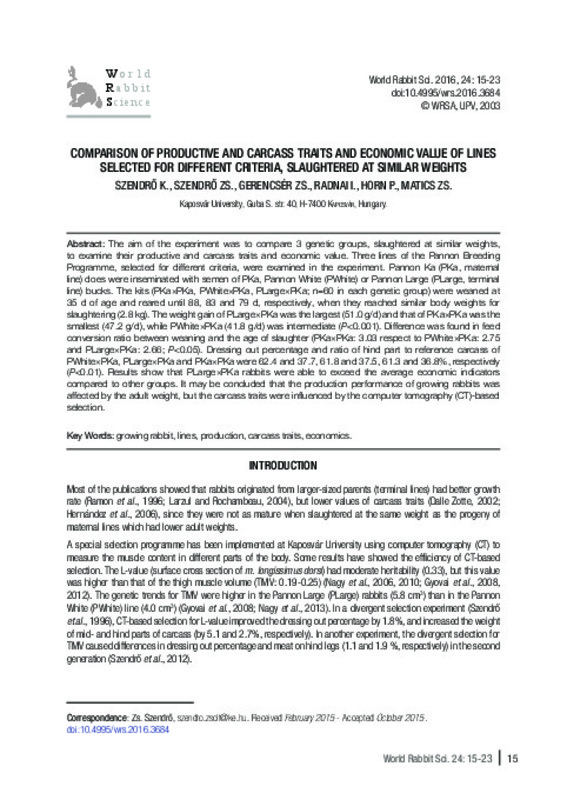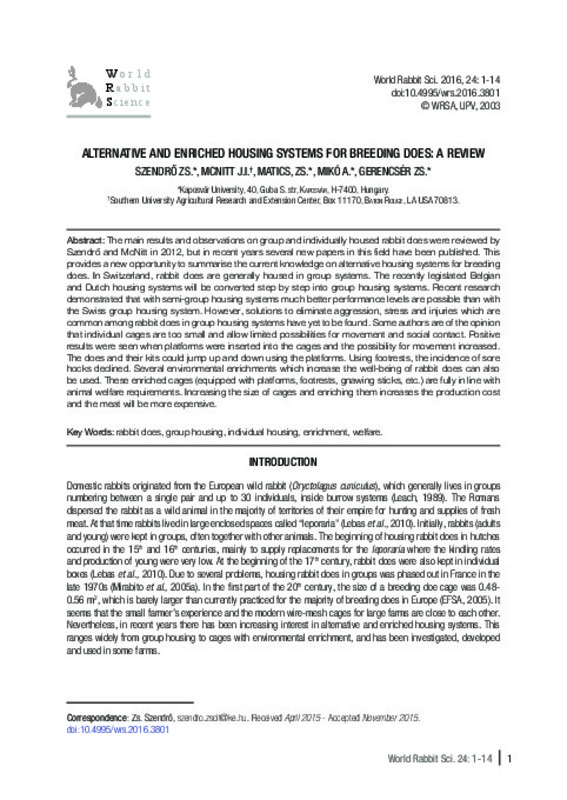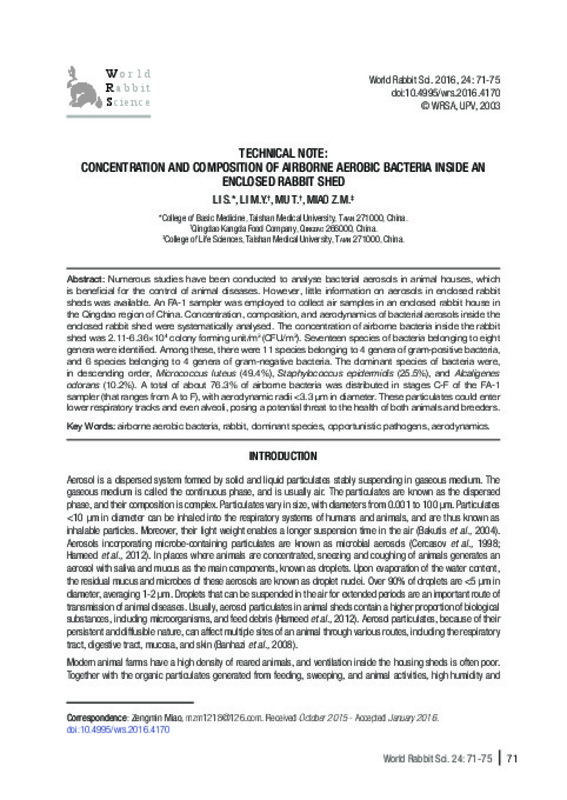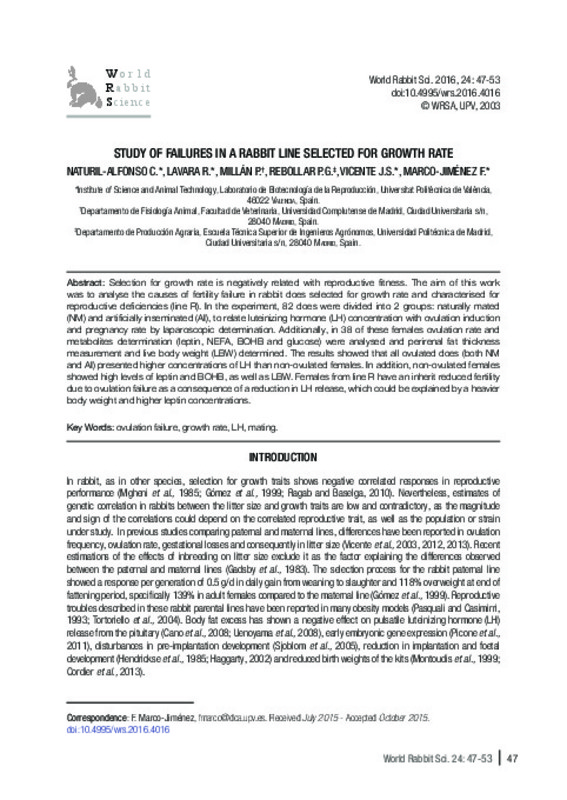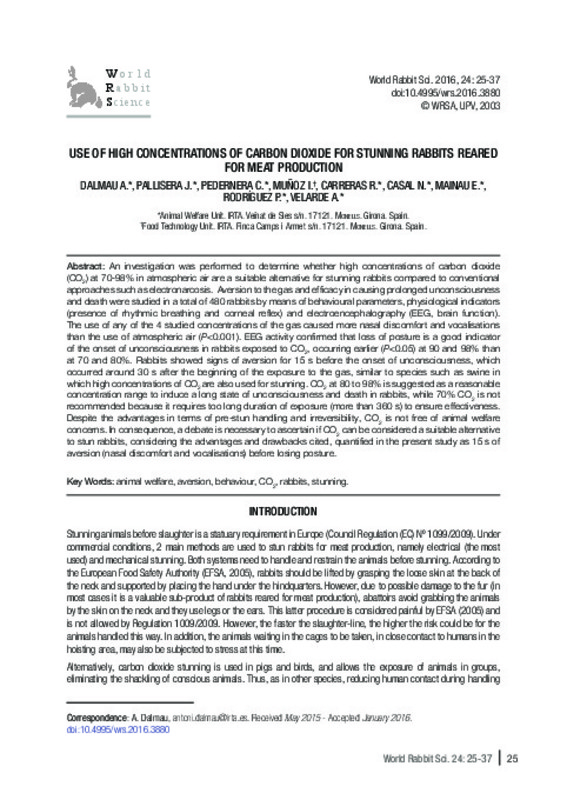- RiuNet repositorio UPV
- :
- Investigación
- :
- Material investigación. Editorial UPV
- :
- Revistas UPV. Editorial UPV
- :
- World Rabbit Science
- :
- World Rabbit Science - Vol. 24 (1)-2016
JavaScript is disabled for your browser. Some features of this site may not work without it.
Refinar
World Rabbit Science - Vol. 24 (1)-2016
Tabla de contenidos
- Alternative and enriched housing systems for breeding does: a review
- Comparison of productive and carcass traits and economic value of lines selected for different criteria, slaughtered at similar weights
- Use of high concentrations of carbon dioxide for stunning rabbits reared for meat production
- Patterns of body condition use and its impact on fertility
- Study of failures in a rabbit line selected for growth rate
- An LPS based method to stimulate the inflammatory response in growing rabbits
- Short communication: effect of saccharomyces cerevisiae supplementation on some biomarkers of oxidative stress in weaned rabbits during the hot-dry season
- Technical note: concentration and composition of airborne aerobic bacteria inside an enclosed rabbit shed
- Effect of diet supplementation with live yeast (Saccharomyces cerevisiae) on performance of rabbit does and their progenies



